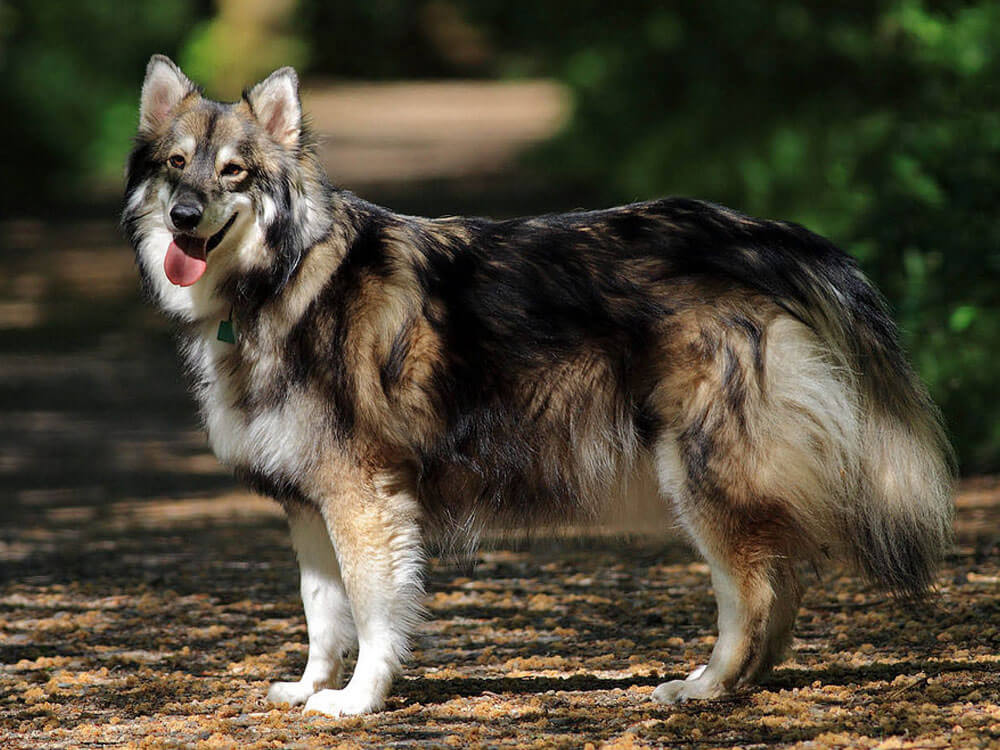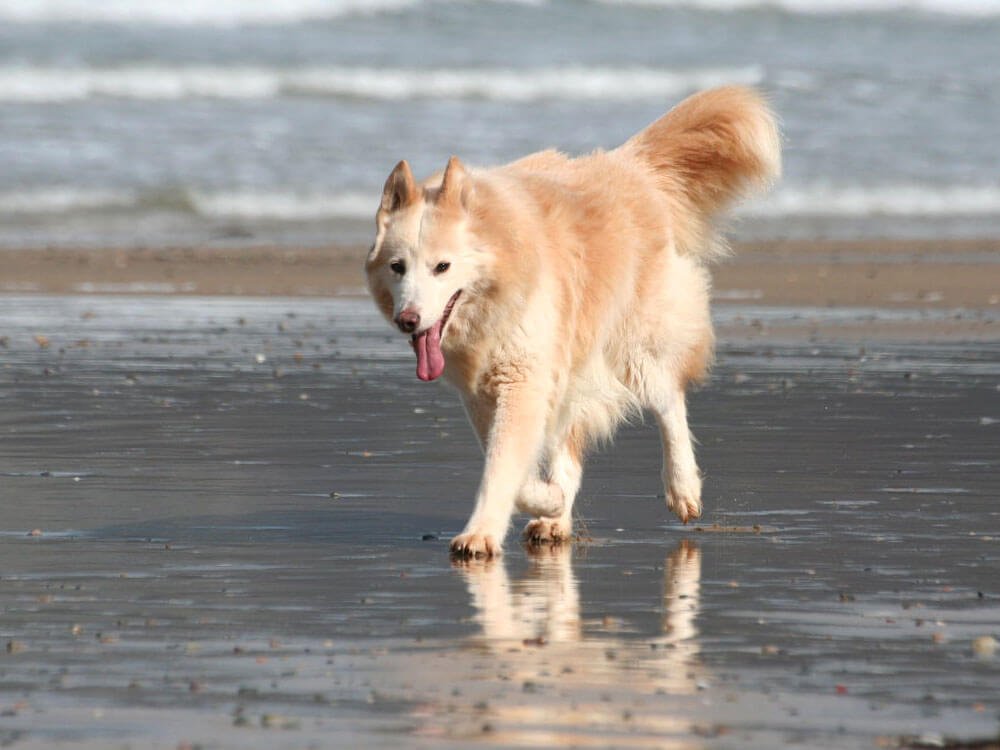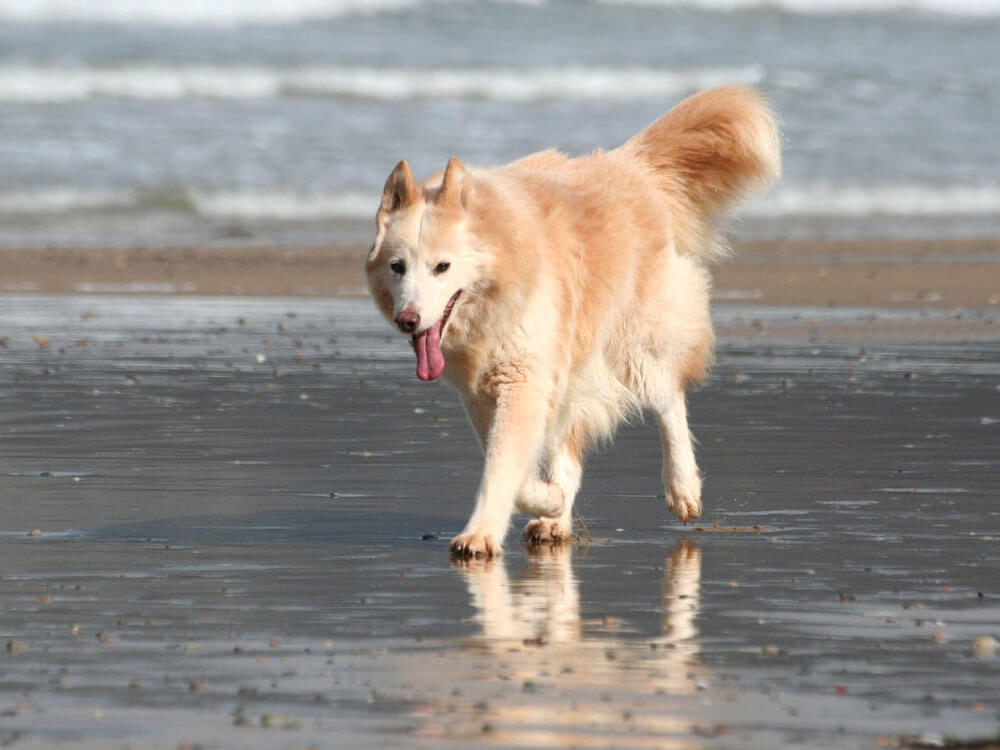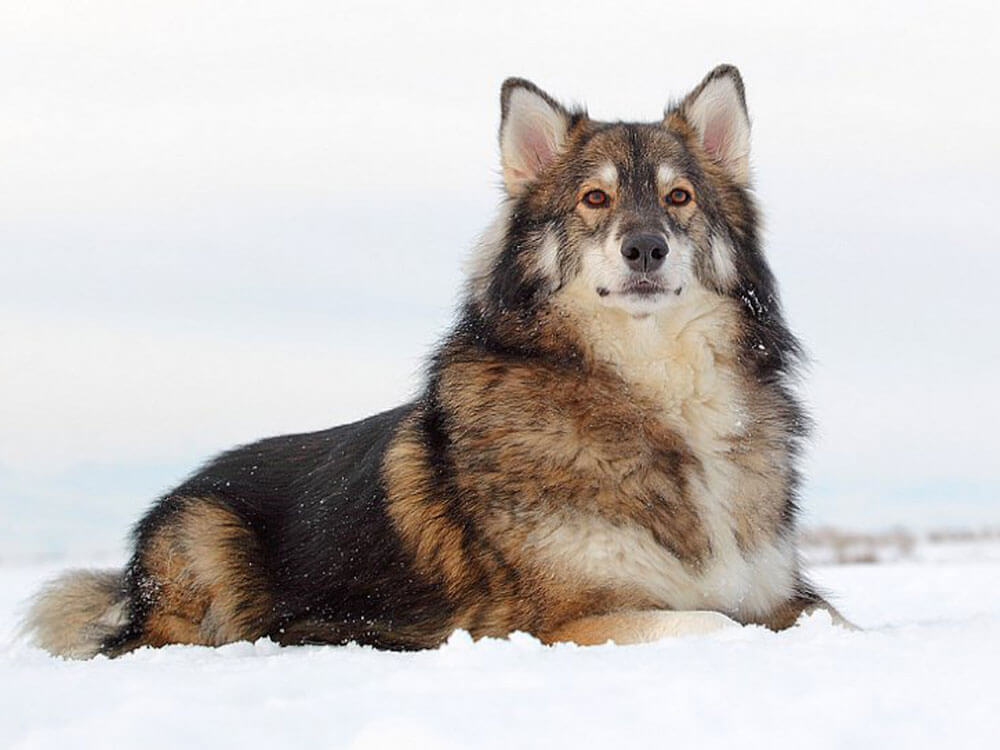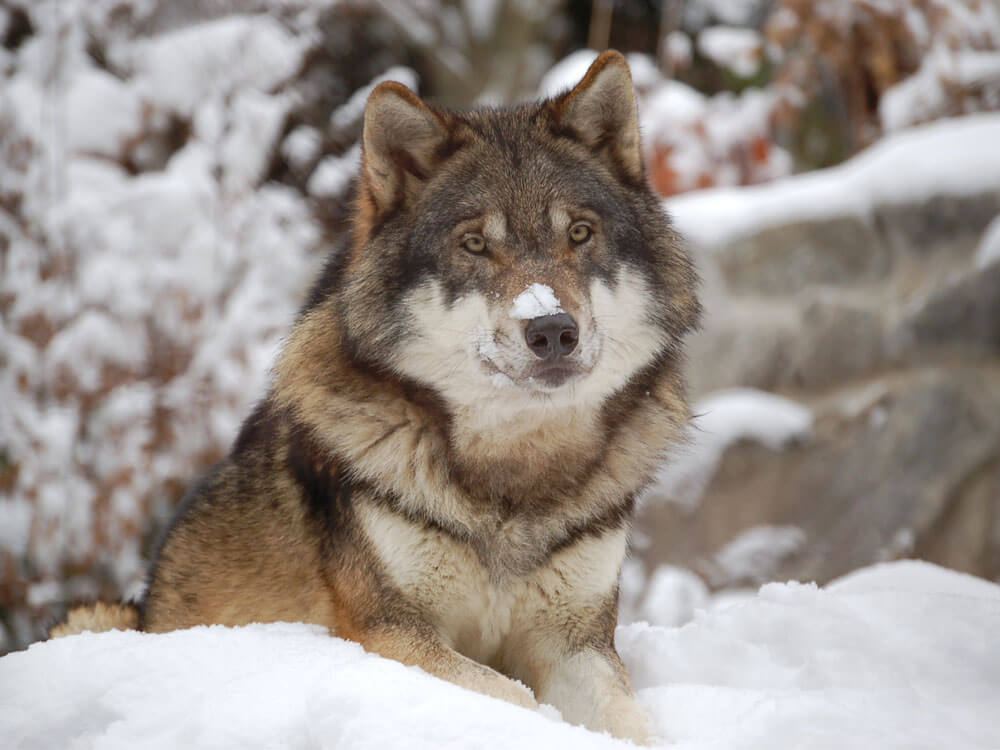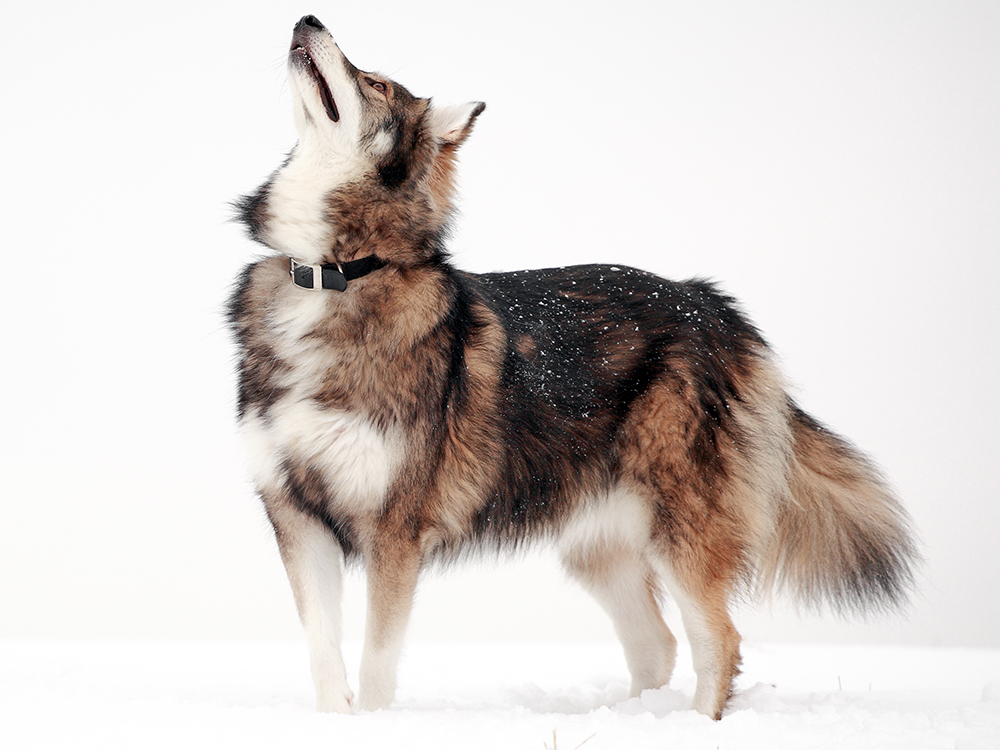
Utonagan Breed Pictures
Vital Breed Stats
| Height: | 51 - 56 cm M | 51 - 56 cm F |
| Weight: | 20 - 27 kg M | 16 - 23 kg F |
| Life Expectancy: | 11 - 14 years |
| KC Registered: | No |
Breed Characteristics
| Size: |  |
| Grooming: |  |
| Exercise Level: |  |
| Trainability: |  |
| Barking Level: |  |
| Good with Children: |  |
| Good with other pets: |  |
| Affectionate: |  |
| Protective: |  |
| Cost to Keep: |  |
Give a thumbs up if you love the Utonagan

0
More About the Breed
History
The Utonagan is a new breed, emerging only in 1987 in the UK and marking up an intriguing history. Edwina “Eddie” Harrison bred 5 mixed-breed rescue canines from Northern America with the Siberian Husky, German Shepherd, and Alaskan Malamute to develop the Utonagan. Its name was inspired by an ancient Chinook Indian story that means “spirit of the wolf.”. Although this breed looks very much like a wolf, it has no wolf DNA.
This dog was originally called “Wolf-Dogs,”, being bred to look like wolves whilst retaining domestic dog attributes. It was later renamed to the Northern Inuit Dog as the first name did not catch on. Further down the line, it was renamed to Utonagan.
Down the Utonagan line, the breed was developed in a certain way which later made it different from the Northern Inuit. More lines were added to the Utonagan breed whilst the Northern Inuit breeders continued to use “pure” breeds. Utonagan clubs also emerged which further encouraged the split from the Northern Inuit.
Although there was an effort towards prudent breeding of the said dog type, differences amongst various Utonagan breeders created further splits. As such, there are 2 types of Utonagans, the other one being referred to as British Utonagans. This line still has its links to the original. Its development involved crossing the Utonagan with a Siberian Husky, German Shepherd, or Northern Inuit.
Today, this breed is still not recognised by The Kennel Club. However, there are efforts towards establishing it for future recognition by international breed organisations.
Appearance
The average Utonagan height ranges from 63-84 cm. It usually weighs between 25-50 kg, which confirms its status as one of the large dog breeds. This dog has a large and muscular body, with a lighter build that lends it an athletic appearance. As such, it rates high on speed, agility, and power.
The Utonagan’s head is proportionate to its body and has a muzzle a bit longer than the average canine’s skull. The nose can be black or dark brown whilst the eye colour range from dark brown to amber. The yellow eye hue is the most preferred one, though. The muzzle is tapered and long and strong. Its neck is long, strong, and muscled, covered by a mane that makes it appear thicker. Its face has well-defined mask-like colouring, which is one of the main distinguishing features of the breed. White masks are deemed unacceptable. Its chest is streamlined and with a long body. The hindquarters are muscular and powerful, whilst the back legs are parallel to each other. This dog’s front paws are oval shaped and larger than the back feet. All feet are webbed. The tail of an Utonagan is characteristically bushy and thick. Coloured Utonagans are expected to have a black tip to its tail.
The acceptable coat colours of this dog breed are black, grey, tan, and buff. The coat itself is tight, close, and rather straight. Shedding may range from moderate to high, and is especially profuse in the hotter months of the year.
Grooming
Temperament
This multi-breed dog is very intelligent, sweet, friendly, loyal, docile, and even-tempered. It may have a wild look but it is not known to have an aggressive bone in its body. Rather, the Utonagan likes human company and domestic settings. It likes to get involved and likes to be active with its family. It is good with children, thanks to its gentleness and even temper. Its well-balanced nature is such that it has been used as Pets as Therapy dogs.
Having a strong “pack mentality,”, this dog likes to be in a group and is prone to separation anxiety. As such, it should never be left alone for too long.
Intelligence
This breed does well at various dog sports and likes to swim. As an intelligent canine, the quick-witted Utonagan thrives on clear rules and boundaries. It seeks an alpha with a firm yet gentle hand that they can reliably look to for direction. Otherwise, it will assume a dominant role. As such, it is not recommended for first-time dog owners, although it lives well with families.
When socialised sufficiently, the Utonagan puppy will develop into an outgoing and confident canine that is tolerant of various stimuli.
Nutrition
Feeding
Health
- Elbow dysplasia
- Hip dysplasia
- Endocrine troubles
- Addison’s disease
- Epilepsy
- Renal disease
- Von Willebrand’s disease
- Heart issues
Exercise
With its high energy and intelligence, the Utonagan needs at least 60 minutes of daily exercise. It should also be given enough time to run about off lead and opportunities to stimulate its mental capacities.
As this breed has a thick coat, it is likely to overheat when exercised vigorously in warm weather. During the hotter months, it is recommended to walk the Utonagan during the cooler hours of the day.
Cost of Ownership
The Utonagan, although growing in popularity, is still an uncommon breed. As such, enquirers need to register and be waitlisted with breeders. Prepare atleast £800 to £1,000 for the price of a puppy Utonagan.
Expect to spend no less than £500 for a well-bred Utonagan puppy. The costs of insurance can range from £22 annually (basic) to £47 (lifetime) monthly. Good quality food can range from £40-50 every month. Veterinary expenses, including vaccinations, health checks, and spaying/neutering, may reach £1,000 annually.
Overall, the average expense in caring for an Utonagan is about £70-£100 each month. This is dependent on the insurance coverage. Annually, overall lifetime cost estimates can range from £8,400 to £18,000.
Utonagan Breed Highlights
- The Utonagan is a friendly, non-aggressive dog in wolf’s “clothing.”.
- Its gentle and even-tempered nature makes it a good family pet as it is good with children and other pets.
- This very intelligent and active dog needs sufficient physical and mental stimulation daily. As such, it is not an ideal pet for first-time dog owners.
- Its thick coat, which sheds more during the winter, requires regular brushings.
- The Utonagan loves human company and likes to be involved with its family’s activities. As such, it does not do well left to its own devices and may indulge in separation anxiety.
- This breed may inherit some health issues from its multi-breed parents and is thus prone to a good number of conditions.








